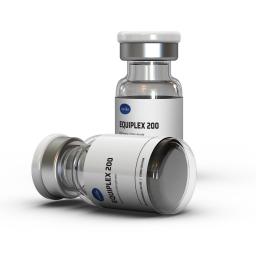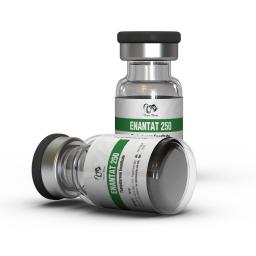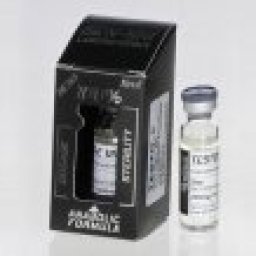The penis is the male sex organ and serves as a passageway for urine. It consists of three cylindrical masses of erectile tissues and the urethra surrounded by a loose layer of skin.
Two paired, copus cavernosa of the penis lie dorsally while one ventrally-located corpus spongiosum surrounds the urethra. The corpus spongiosum expands at the terminal end to form the glans penis. These erectile tissues are composed of venous spaces lined with epithelial cells separated by connective tissue and smooth muscle cells. Most of the penile urethra is lined with pseudostratified epithelium, but in the glans it becomes stratified squamous epithelium. Glands secrete mucous into the urethral lumen all along the length of the penile urethra.
The glans is highly innervated with sensory neurons, that are stimulated by contact and friction during sexual relations. The stimulation may result in ejaculation of semen and pleasure sensation(s).
The arterial supply to the penis originates at the internal pudendal arteries. Nutritive arteries supply oxygen and nutrients to the vascular tissues and trabeculae. Other arteries (helicine) empty directly into the erectile tissues. There is minimal blood flow (i.e. pooling) to the flaccid penis.
Circumcision removes a portion of the skin at the terminus of the penis surrounding the glans. This porcedure dates back thousands of years into ancient Hebrew culture, in which flint knives were used.
Erection
This hemodynamic event is controlled by neural input. The flaccid state is maintained by continuous sympathetic (alpha adrenergic) nervous system stimulation of the penile blood vessels and trabecular smooth muscle. Erection occurs when vasodilator impulses are delivered by the parasympathetic nervous system, which also causes the relaxation of the penile smooth muscle. Dilation of the arterioles of the penis causes the erectile tissue of the penis to fill with blood. The veins are compressed so that outflow is blocked. The effect of these vascular changes is an increase in penile turgor or a ballooning effect. The neural pathways involved in erection are integrated in the lumbar segments of the spinal cord from inputs from sensory endings in the genitalia and descending tracts carrying impulses generated from erotic stimuli. Erection is mediated via the parasympathetic nervous system and terminated via the sympathetic nervous stimulation causing the constriction of penile arterioles. Following orgasm, blood is rapidly removed and the penis becomes flaccid.
Impotence
Erectile dysfunction may occur with or without disturbances in libido (sex drive) or ejaculation. It is likely that most or all men experience occasional episodes of impotence sometime in their lives. The causes of erectile dysfunction can be pathological, pharmacological or psychogenic. Most organic causes boil down to disturbances in neural pathways involved in erection or blood supply to the penis. Drugs and psychogenic factors diminish libido, interfere with neural pathways and blood flow. In some patients, the cause of erectile dysfunction is multifactorial.
Symptoms of erectile dysfunction are, alone or in combination, a constant or episodic inability to maintain an erection, decreased penile turgidity and decreased libido. Signs and symptoms of the underlying pathological or psychological cause may also be seen. In psychogenic or drug-induced cases there is often a rapid onset of the dysfunction. Patients with organic impotence generally have had a more gradual loss of potency without any diminution in libido. However, those patients with a systemic cause, such as cirrhosis or cardiac insufficiency, may have a concurrent loss of libido and potency.
Behavioral therapy, reassurance, explanation and psychotherapy are effective 40-70% of the time in psychogenic impotence. Removing the causitive drug usually results in a return to potency in drug-induced impotence. Effective therapy for the underlying organic cause will similarly effect a cure to erectile dysfunction in many cases. For those with permanent neuronal damage, surgically implanted prostheses are available. These devices have been satisfactory in 85-90% of cases.
Treatments for erectile dysfunction include intercavernous injections or oral medications. Oral treatments include sublingual apomorphine, oral sildenafil, yohimbine, phentolamine, and prazosin. Apomorphine is a centrally-acting non-opiod dopamine agonist with proven erectogenic activity and no effect on libido. It has fewer systemic side effects than some of the other treatments. Oral sildenafil has adverse drug interactions and associated side effects. Alpha adrenergic antagonists such as yohimbine, phentolamine and prazosin are also effective treatments for erectile dysfunction in some men. However, these are general alpha adrenergic antagonists, and therefore have a much broader action than is needed and some unwanted side effects. Specific and relevant adrenergic antagonism awaits the development of highly specific alpha1 receptor antagonists for erectile tissue.
Sildenafil (Viagra™)
Sildenafil is currently the most widely used treatment for male erectile dysfunction. It was originally developed to treat angina, chest pain that is associated with insufficient blood flow to the heart muscle. Oral dosage of sildenafil has a significant benefit over most current treatments for erectile dysfunction, which are administered by direct injection into the penis or insertion of a urethral suppository.
Sildenafil inhibits one form of a phosphodiesterase enzyme that causes an increase in a cellular second messenger, cGMP. The cGMP then causes smooth muscle in the penis to relax allowing increased blood flow. By increasing the levels of cGMP, the drug improves erections by mimicking the natural process. Generally, it does not have an effect in the absence of sexual stimulation.
Sildenafil must not be taken with nitrate/nitrite drugs. This includes drugs such as nitroglycerin that is used to treat angina. Some people use amyl nitrate or nitrite, “poppers”, for recreational use. These drugs act on the same cGMP pathway as sildenafil and using them together can cause low blood pressure that may lead to death.
The body depends on enzymes present in the liver to inactivate and rid the body of many drugs. Certain conditions or diseases, such as liver or kidney impairment, affect the ability of the body to remove the drug. Because an enzyme that acts on many other drugs metabolizes sildenafil, there is the potential for many drug interactions. Some drugs that may increase the levels of sildenafil in the body are the antibiotic erythromycin, several protease inhibitors used in the treatment of HIV, some drugs used to treat fungal infections, and several antidepressants. It is important to discuss the potential for side effects alone or with any other medications you are taking with your physician.
Penile Pathology
Phimosis
In this usually congenital condition, the opening of the prepuce is too small for retraction over the glans penis. Forcible retraction of the foreskin may lead to constriction, swelling and pain of the glans penis. Treatment is circumcision.
Hypospadias
This congenital anomaly results from improper development of the external genitalia. The urethral opening is located on the underside of the penis. This condition is also associated with undescended testicles and curvature of the penis. Surgical repair is to straighten the penis and locate the urethral opening centrally, if possible.
Epispadias
In this congenital anomaly of penile development, the developmental failure is on the dorsal side of the penis and the urethral opening is found on the dorsal side. Surgical repair is aimed at establishment of a normal urethra and penis.
Balanitis
The glans penis is inflammed due to infection in this disease common to uncircumcised males. Symptoms are redness, swelling, pain and purlent drainage. Treatment depends on the causative agent as determined by culture. Circumcision may be indicated.
Sexually Transmitted Diseases
Diseases such as gonorrhea, syphilis, genital herpes, and HIV are transmitted via sexual contact and infect women as well as men.
Chanchroid
This acute disease produces an ulcer on the penis. This condition is prevalent worldwide and is caused by the gram-negative bacillus, Hemophilus ducreyi. Regional lymph nodes may become swollen and tender. Diagnosis is by bacterial culture and sulfisoxazole with good hygeine should facilitate healing in 2 to 4 weeks.
Granuloma Inguinale
This chronic disease is caused by Donovania granulomatis and begins as a small penile lesion that rapidly progresses to a spreading necrotic ulcer. It progressively involves the skin and lymphatics of the groin. Treatment and cure can be effected with antibiotics such as tetracycline.
Genital Warts
Warts in the anogenital area are very common and most are sexually transmitted at a very high rate. Some types of human papilloma virus (HPV) are the causative agent of some, but not all genital warts, and may induce cervical or penile cancer. Twenty million Americans, men and women alike, are infected with HPV. Treatment includes removal of the warts by the use of lasers, freezing or burning. There is no cure and the warts may recur at any time.
Top Steroid Products Online
Order GP Bold 200
|
Legit Enantat 250
|
Buy Testo-E 1250 (5ml)
|


